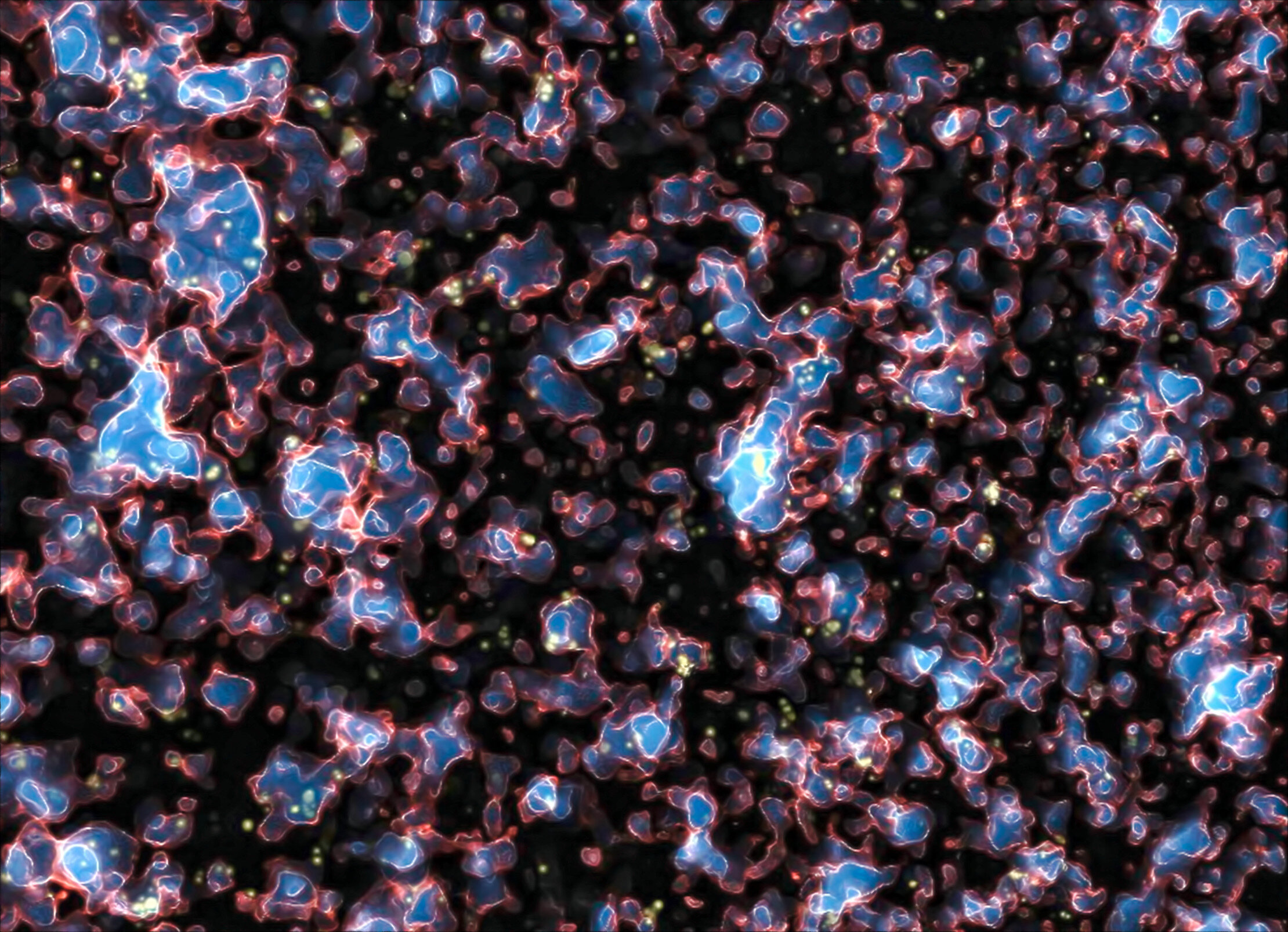James Webb upends our understanding of the Universe again: reionization in question
Published by Adrien,
Source: Monthly Notices of the Royal Astronomical Society: Letters
Other Languages: FR, DE, ES, PT
Source: Monthly Notices of the Royal Astronomical Society: Letters
Other Languages: FR, DE, ES, PT
Follow us on Google News (click on ☆)
Reionization refers to the moment when the first stars began to transform their immediate surroundings. This triggered a global transformation on a universal scale, affecting nearly all of the hydrogen present. The process ended when almost all hydrogen became ionized, meaning it was separated into protons and electrons.

Simulation of galaxies ionizing hydrogen gas (bright areas) during the reionization period.
Credit: M. Alvarez, R. Kaehler and T. Abel / ESO
However, in the first 380,000 years after the Big Bang, the Universe was just a hot, dense plasma. But as it cooled, it allowed for the formation of neutral hydrogen atoms. Around 100 million years later, the first stars were born, initiating reionization by emitting powerful ultraviolet radiation.
These stars, gigantic and extremely bright, quickly ionized their surroundings. This enormous transformation of hydrogen, which makes up 75% of the matter in the Universe, marks the end of the reionization period. According to Julian Muñoz from the University of Texas at Austin, this phase is crucial because it profoundly altered the evolution of galaxies.
Yet, astronomers don't observe this epoch directly. They use models based on clues such as the leftover light from the Big Bang, known as the Cosmic Microwave Background, or specific signatures of hydrogen, such as the Lyman-alpha forest. These clues allow them to deduce when the Universe transitioned from a neutral to an ionized state.
JWST's findings now pose a challenge to these models. The observations reveal an abundance of galaxies emitting ultraviolet radiation much earlier than expected. This calls into question the idea that reionization ended about one billion years after the Big Bang. Could it have concluded hundreds of millions of years earlier? This would overturn our understanding of that period.

Reionization in the current timeline of the universe, from 400 million to 1 billion years after the Big Bang.
Image Wikimedia
Some researchers, like Muñoz, believe these data are not compatible with other observations. It's possible that processes like recombination, where protons and electrons reunite to form neutral hydrogen atoms, are underestimated in current models.
Further studies on recombination and more detailed observations of galaxies are necessary to clarify this enigma. Future discoveries from the JWST will likely be essential in resolving this scientific tension and better understanding this key period in cosmic history.
What is reionization, and why is it important?
Reionization is a key phase in the history of the Universe. It begins around 400 million years after the Big Bang, when the first stars and galaxies form. These objects emit ultraviolet radiation capable of breaking neutral hydrogen atoms into protons and electrons. This process is called ionization.
The end of reionization marks the point when nearly all the hydrogen in the Universe became ionized. According to classical models, this event was thought to have concluded around one billion years after the Big Bang. However, new data from the James Webb Space Telescope suggest it might have occurred earlier.
Reionization is the last major transformation of the Universe. It affected the evolution of galaxies and the distribution of matter. It represents a crucial step in understanding the formation of the current structures of the Universe, such as galaxies and galactic clusters.